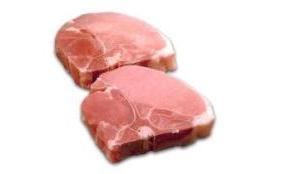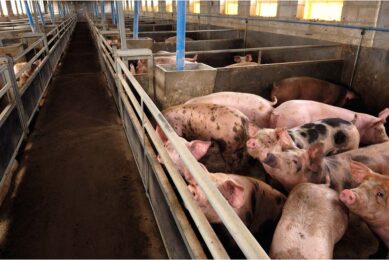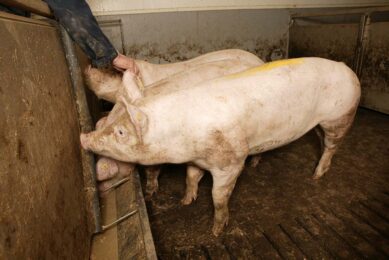North American ‘pork wars’ continue

Continuing uncertainty about the requirements of US Country of Origin Labelling (COOL), together with a massive increase in the volume of pork exported from the US into Canada, are two of the many issues facing a beleaguered Canadian pork industry, which has seen 20% of its producers wiped out over the past two years.
By Bernard Peet
For many years Canada had the advantage of being one of the world’s lowest cost producers, which propelled it to the top of the pork export league table less than a decade after the industry entered into a period of rapid expansion in the mid-nineties. Now, with its large-scale integrated structure and highly efficient processing plants, the US industry has the cost advantage. This, combined with a lower US dollar, has given it the edge in export markets. But Canada is fighting back with a campaign aimed at persuading domestic consumers to buy Canadian pork and reduce the flow of imports from the US.
COOL rules under further review
Just after the final rules on labelling were published in January and implementation had begun, the new Obama administration ordered a further 60-day review period immediately after coming into office, extending a long drawn-out saga that has created uncertainty and confusion on both sides of the border. The original COOL legislation goes back to the 2002 US Farm Bill, but only went into effect for fish and seafood in 2005, with other fresh food products delayed until 2008. “Originally, COOL was pushed by some US livestock producers who felt it would enhance the price of US livestock,” noted Dr Ron Plain, professor of agricultural economics at the University of Columbia-Missouri, speaking at the Banff Pork Seminar held in January.
However, he says, since the melamine scares, COOL has become a consumer issue. The labelling requirement is for fresh products only and not processed products. “Examples of exempt pork products would be bacon, sausage, ham and breaded pork loin,” Plain points out. “Products sold through food service outlets are also exempt.”
The Canadian pork logo is prominently used on retail packaging.
Although COOL will have implications throughout the food chain, the main concern for producers is the degree of segregation required between US and Canadian pigs and pork products. The key to this is the definition of the labelling requirements, and in this respect the ‘final’ ruling issued on 15 January appeared to be favourable to Canadian producers. “This says that if a packing plant slaughters, animals originating from more than one country on the same day, it can place a multi-country label, saying ‘product of the US and Canada’ on the meat from those animals,” explains Plain. However, he says, on days when only US pigs are killed, they will have to be labelled as product of the US, meaning that processors have to segregate the two products. Canadian producer organisations have welcomed the flexibility in labelling allowed in the rules and say that they make it much more likely that some processors will continue to slaughter pigs from both countries. It remains to be seen whether the Obama administration will make further changes or whether the existing rules will remain.
The COOL legislation may turn out be a double-edged sword, believes Plain. “First, consumers can exercise their preference for American products, if they have one,” he says. “Second, because tracking and verifying meats will be such a big hassle, packers, processors and retailers may chose to avoid imported animals and meat.” However, it also creates the opportunity for the Canadian industry to promote its product within the US, he believes.
“There is increased demand for imported foods and Americans pay a premium for Heineken beer, French wine and Swiss chocolate, so why not a premium for Canadian pork and beef?” asks Plain, adding that US consumers are well disposed to Canadian products.
The minority of people who want to purchase only US meat may, in the end, determine the eventual outcome, he concludes. “Many American packers are moving towards the US-only label because it is the easiest option,” he says. “I expect that fewer Canadian hogs and more Canadian pork will be heading south in future.”
Increasing imports from the US
Although Canadian producers have been up in arms about country of origin labelling in the US, ironically it is the lack of labelling in Canadian grocery stores that has prevented differentiation of home-produced pork. Increasing exports of pork from the US over the past few years, in response to a weakening US dollar, have displaced Canadian products on the shelf. This situation seems to have crept up on the industry despite the fact that the trend has been going on for many years (Figure 1). Over the past five years the industry has made a transition from a low cost producer that could export pork at an attractive price due to the weak Canadian currency. Now it is a higher cost producer with a much stronger currency and a large, efficient and aggressive competitor to the south.
Between 2003 and 2007, imports of pork from the US increased by approx. 50%. The year 2008 saw a big jump in imports and it is likely that the annual figure will be over 170,000 tonnes, or at least 15% higher than 2007. This means that over 20% of the pork consumed in Canada will have come from the US. By comparison, Canadian pork exports to the US totalled just over 350,000 tonnes in 2007. Although this is double the level of imports, the US has 10 times the population of Canada, so Canadian pork represents just a small proportion of total consumption.
Canada fights back on pork sales
In 2008, the Canadian industry started fighting back in an attempt to win a higher market share for home-produced pork. Earlier in 2008, Pork Marketing Canada (PMC), an organisation made up of provincial pork marketing boards and associations, launched a campaign to persuade consumers to choose Canadian pork. Central to this was the use of a ‘Canadian Pork’ logo used to identify Canadian pork in participating grocery stores. Starting in June, PMC launched a major consumer awareness campaign, including TV advertising, backed by market research showing that 95% of consumers would prefer to buy Canadian-grown product that is competitively priced.
Market research essential
Central to PMC’s campaign has been ongoing market research, not only to learn about the demographics of pork consumers, but also to study attitudes towards pork and pork purchasing. “Overall, consumers have very positive perceptions of Canadian pork and beef producers,” says Roy Kruse, director of PMC. “The vast majority considered them an important part of Canada’s economy and future, with higher food and safety standards than anywhere else in the world.”
A December 2008 survey showed that 30% of Canadian adults claimed to have seen at least one aspect of the ‘Choose Canadian Pork’ campaign, such as advertising or the logo, during the previous four weeks.
“Regardless of whether respondents saw the TV or magazine advertising, their intent to buy Canadian pork was very high and more than half actively looked for Canadian pork on a subsequent grocery shopping trip,” notes Kruse. It is still too early to determine whether the campaign was a success or not, but there is no doubt that it has increased awareness and allows consumers to easily identify Canadian product. “The Choose Canadian programme is central to PMC’s business plan and will be a permanent effort, one around which producers and the industry can build over the long term,” Kruse concludes.
Exchange rates provide relief
Between July and November 2008, the Canadian dollar, which had been trading on a par with the US dollar for close to 12 months, fell sharply, in tandem with the price of oil, giving some much-needed relief to Canadian producers. At current exchange rates, this effectively represents a 25% increase in the price received for slaughter pigs, which is derived from the US price. Also, a stronger US dollar means that American pork is less competitive in export markets and it is easier to market Canadian pork overseas. In the long-term, however, the Canadian industry cannot survive by relying on a weak currency as it did until a few years ago. It must restructure itself to create more value in the supply chain and further reduce costs, while focusing more on the home market, which has been sorely neglected until now.
Source: Pig Progress Volume 25 nr 2
Join 18,000+ subscribers
Subscribe to our newsletter to stay updated about all the need-to-know content in the pigsector, three times a week. Beheer
Beheer










 WP Admin
WP Admin  Bewerk bericht
Bewerk bericht